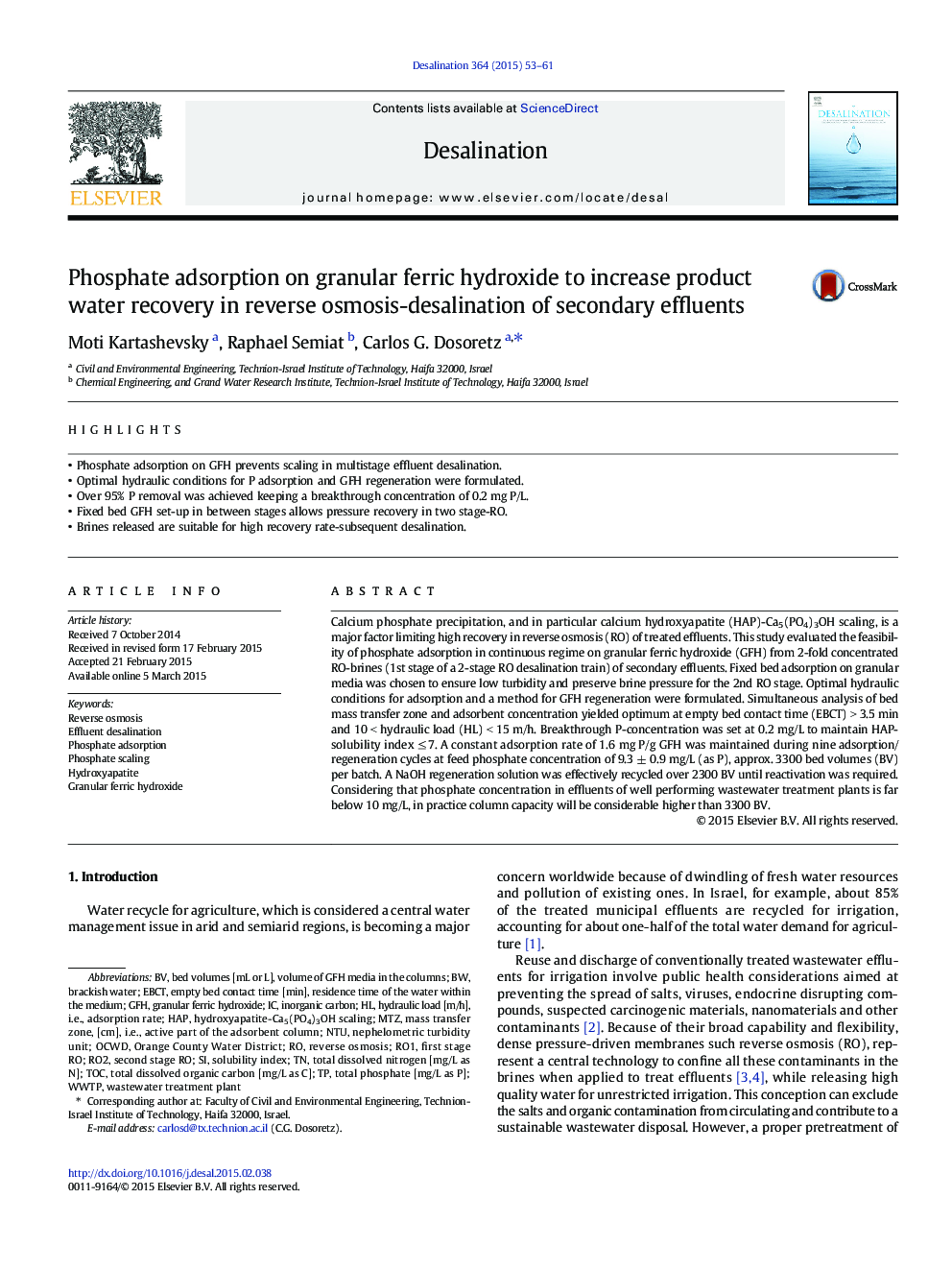| Article ID | Journal | Published Year | Pages | File Type |
|---|---|---|---|---|
| 623134 | Desalination | 2015 | 9 Pages |
Abstract
Calcium phosphate precipitation, and in particular calcium hydroxyapatite (HAP)-Ca5(PO4)3OH scaling, is a major factor limiting high recovery in reverse osmosis (RO) of treated effluents. This study evaluated the feasibility of phosphate adsorption in continuous regime on granular ferric hydroxide (GFH) from 2-fold concentrated RO-brines (1st stage of a 2-stage RO desalination train) of secondary effluents. Fixed bed adsorption on granular media was chosen to ensure low turbidity and preserve brine pressure for the 2nd RO stage. Optimal hydraulic conditions for adsorption and a method for GFH regeneration were formulated. Simultaneous analysis of bed mass transfer zone and adsorbent concentration yielded optimum at empty bed contact time (EBCT) > 3.5 min and 10 < hydraulic load (HL) < 15 m/h. Breakthrough P-concentration was set at 0.2 mg/L to maintain HAP-solubility index â¤Â 7. A constant adsorption rate of 1.6 mg P/g GFH was maintained during nine adsorption/regeneration cycles at feed phosphate concentration of 9.3 ± 0.9 mg/L (as P), approx. 3300 bed volumes (BV) per batch. A NaOH regeneration solution was effectively recycled over 2300 BV until reactivation was required. Considering that phosphate concentration in effluents of well performing wastewater treatment plants is far below 10 mg/L, in practice column capacity will be considerable higher than 3300 BV.
Keywords
Related Topics
Physical Sciences and Engineering
Chemical Engineering
Filtration and Separation
Authors
Moti Kartashevsky, Raphael Semiat, Carlos G. Dosoretz,
